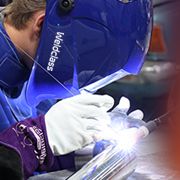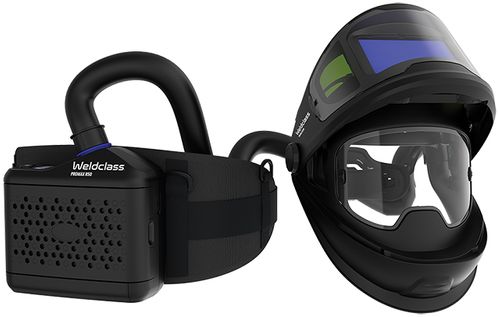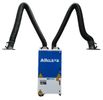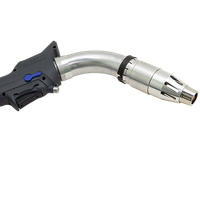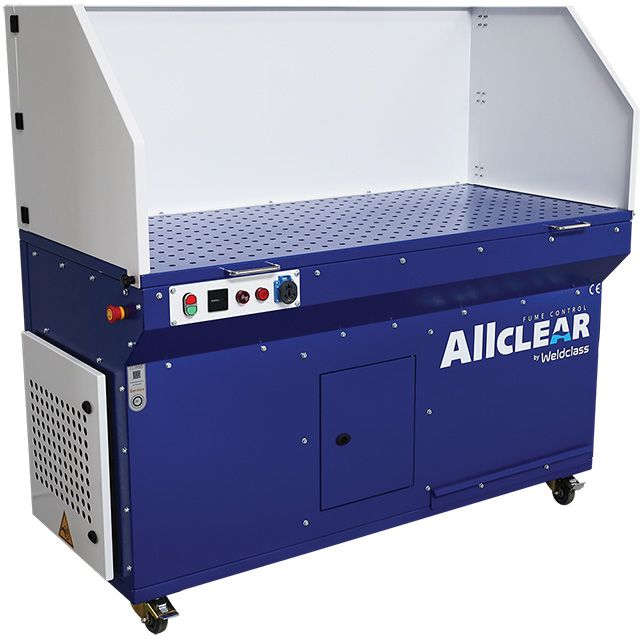Chosing The Right Welding Fume Extractor
In this guide we compare the common methods of controlling and protecting personnel from welding fumes. Welding fumes are more than just a bit of smoke - they contain fine metal particles, gases and chemical vapours that can seriously impact your health over time. Australian Legislation, enacted in all States of Australia since 2024, is also very tough on Fume Control. So if you’re welding regularly, you need a plan to manage fumes properly.
In this article:
Compare Fume Solution By Application
Compare Fume Extractor Types: Advantages and Disadvantages
Helmet, Mobile, Table, or Torch?
Get a Quote | Request a Demo View The ALLCLEAR Range
Compare Welding Fume Extractors By Application
In the following table we compare the common fume extraction and protection methods vs their suitability in different applications.
|
Type |
Ducted Extraction |
||||||
| Fumes extracted at / close to the source | ❌ | ✔️ | ✔️ | ✔️ | ✔️ | ✔️ | ✔️ |
| Reduces fumes for all workers in the environment | ❌ | ✔️ | ✔️ | ✔️ | ✔️ | ✔️ | ✔️ |
| Stationary / localised work | ✔️ | ✔️ | ✔️ | ⚫ | ✔️ | ✔️ | ✔️ |
| Mobile work / changing locations | ✔️ | ✔️ | ✔️ | ✔️ | ❌ | ❌ | ❌ |
| Suitable Processes: | |||||||
| MIG: Downhand / Horizontal Position | ✔️ | ✔️ | ✔️ | ✔️ | ✔️ | ✔️ | ✔️ |
| MIG: Vertical & Overhead Position | ✔️ | ✔️ | ❌ | ✔️ | ⚫ | ⚫ | ⚫ |
| TIG | ✔️ | ✔️ | ⚫ | ✔️ | ✔️ | ✔️ | ✔️ |
| Stick / MMA | ✔️ | ✔️ | ❌ | ✔️ | ✔️ | ✔️ | ✔️ |
| Plasma & Oxy Cutting, Grinding, Gouging | ✔️ | ⚫ | ❌ | ⚫ | ⚫ | ⚫ | ⚫ |
|
High fume volume |
✔️ |
⚫ |
⚫ |
❌ | ⚫ | ⚫ |
⚫ |
✔️ Suitable/applicable ❌ Not suitable/applicable ⚫ Depends on unit/model capability & specific application
Comparing Fume Extractor Types: Advantages and Limitations
Here we cover some of the key pros and cons for each of the main types of welding fume extraction and protection systems.
Get a Quote | Request a Demo View The ALLCLEAR Range
Helmet, Mobile, Torch, or Table - What is the Right Fume Solution for your Workshop?
These are all popular mothods of fume control, used in workshops across Australia. Each has strengths and limitations, here's a quick summary of each:
PAPR – Personal Protection Wherever You Go
PAPR systems deliver filtered air to the welder via a powered unit and helmet. Great for almost any welding applications and processes, be that production, mobile work, tight spaces, etc. The cooling effect of powered air also provides additional comfort in Australia's hotter climate.
The catch? PAPR only protects the user. A large % of fumes still enter the air, risking others if no other controls are in place.
LEV (Mobile Extractors) – Clean Air for the Whole Workshop
LEV mobile extractor systems, like the Weldclass ALLCLEAR® range, use mobile extraction arms to pull fumes away from the weld zone. They’re highly effective at cleaning the general air and reducing exposure for everyone.
The downside? LEV relies on precise positioning — if the arm is too far or knocked out of place, performance drops. It’s best suited for localised jobs, not long weld runs beyond the reach of the hood.
On-Torch MIG-Gun Extraction – Capture It at the Arc
On-Torch systems, capture fumes directly at the arc / torch nozzle, ideal for production and repetitive welding.
Drawbacks? They can add weight and bulk to the torch and aren’t as effective for vertical welding compared to horizontal or down-hand work.
Downdraft Tables
Fume extraction tables are ideal for production and education environments, where a lot of welding takes place in a workstation environment. There is minimal intrusion into the welders space, in fact downdraft tables can improve ergonomics beyond just fume management by providing a convenient work surface.
On the flip side, downdraft tables are not suitable for workpieces that are too large to fit on the table surface.
Stronger Together
No single fume solution is perfect and suited to every application, but when combined, they offer powerful, layered protection.
Equipping welders with PAPR helmets, along with a suitable fume extraction system—whether mobile, torch-mounted, or table-based—is standard best practice for protecting workers and ensuring compliance with legislation that sets strict limits on welding fume exposure.
Get a Quote | Request a Demo View The ALLCLEAR Range
Related Articles
Does Your Welding Fume Extractor REALLY Suck?
Do Mobile Welding Fume Extractors Work?
Complete Guide to PAPR Welding Helmets


